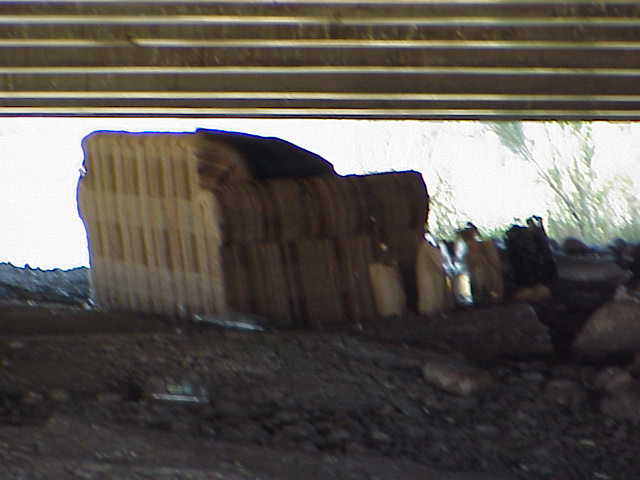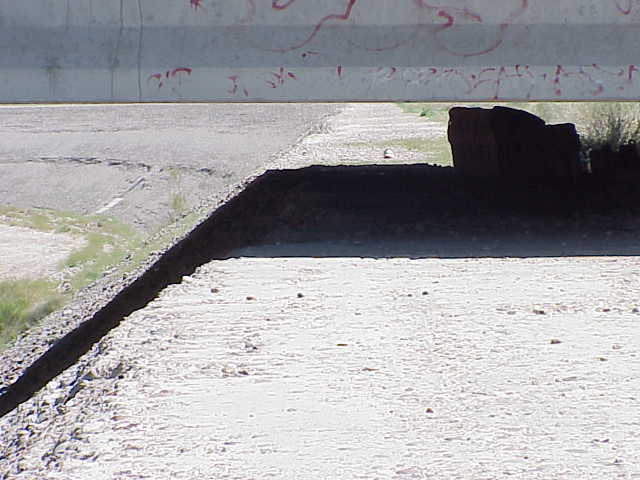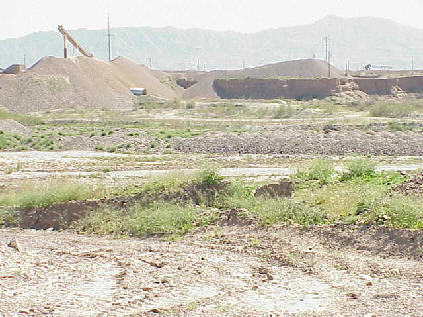

Joes home, read about it below.

Joe's home - read about Joe, just below.
2.html
Mike Brown
SOC 332, Modern City
February 28, 2003
Rio Salado Habitat Restoration Project
The Rio-Salado Habitat Restoration Project
The Rio-Salado Habitat Restoration Project involves many factors. The Rio Salado Habitat Restoration Project, or Rio-Salado project, has so many aspects involved it is just simply scary; but being scared is not the worry, it is the future of the entire Salt River and surrounding areas that are at stake. What is, or who knows about, or is concerned about the Rio-Salado project? The following will discuss just that.
To begin, I, along with my professor and classmates, took a brief tour of the Rio-Salado project area and was able to attend both pro and con lectures on the project. The pro tour was presented by Susan Sargeant, City of Phoenix Planning Dept. and Danielle Taddy, the Rio Salado Park Manager, who were of course in favor of the Rio-Salado project and had nothing negative to say. Without encouragement I was skeptical about many things. Being skeptical I sought to see through the pretty picture of the future and seek out the worst in the Rio-Salado project ordeal. Fortunately I did not have to go far because our next lecture was given by Steve Brittle who is an environmentalist that has been involved in many things, most notably Don’t Waste Arizona.
While many opinions were offered and many positions considered, one topic that was basically ignored was the homeless people that occupy various areas along the Salt River. Susan Sargeant, City of Phoenix Planning Dept. and Danielle Taddy, the Rio Salado Park Manager, both discussed residential properties, various industries, and economics in general, but no mention of the homeless who occupy the Salt River basin. Steve Brittle, the environmental activist, talked about health issues and the impact upon many parts of the society, but not the homeless. In view of this, I conducted further research.
My research on the homeless in the Salt River area consisted of investigating publications relating to the matter and conducting field interviews. One publication I found interesting was the Rio Salado Beyond the Banks Advisory Committee Mission Statement, it states “The restoration project will transform the riverbed to provide a variety of amenities including recreation opportunities, improved flood management, riparian vegetation and wildlife habitat.” (1) I say that statement is geared towards the upper classes and has no regard for the homeless. Of course the typical sentiment, but thankfully not all, amongst the upper classes is to treat the homeless with no regard and have basically no concern for their welfare. So if the Rio Salado project is completed, where are these people supposed to go? The riverbed is their home. I spoke with many homeless people; one in particular, who I’ll call “Joe”, (2) really has no where else to go except to maybe sleep on a bus stop bench. Joe obviously had some financial difficulties, but he did receive a monthly disability check which provided him enough to buy food, but not pay rent anywhere; so he simply made a structure out of miscellaneous debris and lives by the river so he can have water to drink. So where will Joe go if the Rio Salado project is completed?
Joe is only one of many with no place to go. Another interview I conducted was with a corporation owner who was leasing some land along the riverbed. He, who I’ll call “John”, (3) did not want to be named, but I will say he is a multi-millionaire. John and I discussed the Rio Salado Habitat Restoration Project and how it affected his business. The Rio Salado Update had an article that stated that “The Project site includes…terrace level and low flow channel[s].” (4) John’s business depends on water flow, which will be negatively affected by the Rio Salado project. His business is also affected by those who occupy the part of the riverbed upon which he works. He has placed no trespassing and no dumping signs, but to no avail. The problem of people dumping garbage on his property is obvious, including the dead body that was dumped only within the last two weeks. As far as trespassing, well this applies to mischievous teenagers, hikers, nosey trespassers like me, and the homeless. I probed a little more and found that his main concern with the homeless on his property was the litter they leave behind. He also has been the victim of vandalism, which was more likely mischievous teenagers, not adult homeless people. Even though the Rio Salado project is not directly upon Johns land, it is obviously being affected. Many people like Joe simply move down river every time the Rio Salado construction gets closer. John calls the police to have them removed from his property. So where are the homeless to go?
To conclude, I do not know where the homeless are to go. As mentioned, the Rio-Salado project involves many factors, environmental and economic. Finally, I just hope the public becomes more aware of, not only the environmental and economic problems surrounding the Rio Salado project, but aware of the homeless difficulties that the Rio Salado project is creating and take action to help these individuals any way that they can.
References:
1. Rio Salado Beyond the Banks Summary Report. Prepared by, the Rio Salado Beyond the Banks Advisory Committee and the City of Phoenix, October 1999.
2. “Joe” has lived around and in the Salt River bottom for almost two years. The debris around the area he used to build his shelter ranged from shotgun shot couches, stacks of used tires, and various pieces of wood, some cut and some simply tree limbs. If one really wants to observe the homeless problem around the Salt River first hand, just simply ignore the “No Trespassing” signs and venture into the unseen and unknown. *****Special Note, this illegal and dangerous, attempt at your own risk*****
3. “John”; Well I met John by trespassing on his property. He confronted me and I informed him that I was an ASU student conducting research. Upon hearing this he really opened up to me and explained the difficulties, mentioned above, that he was having. Pictures of the dumped garbage on his property are available through links on my web site.
4. Rio Salado Update. Winter 2003, Volume 7, Issue 1. Published by, the City of Phoenix Parks and Recreation Department.
